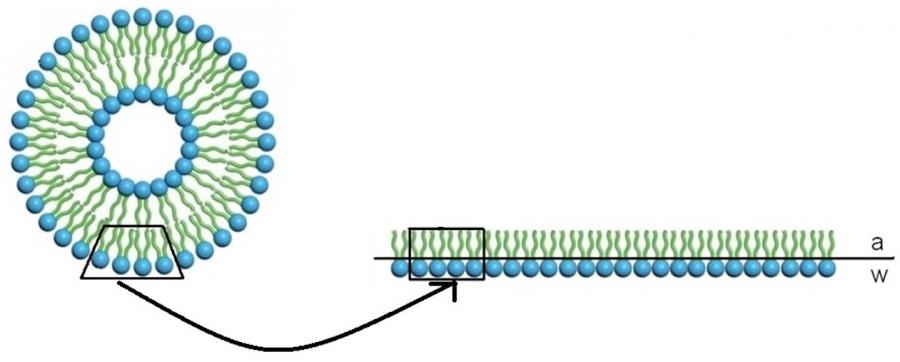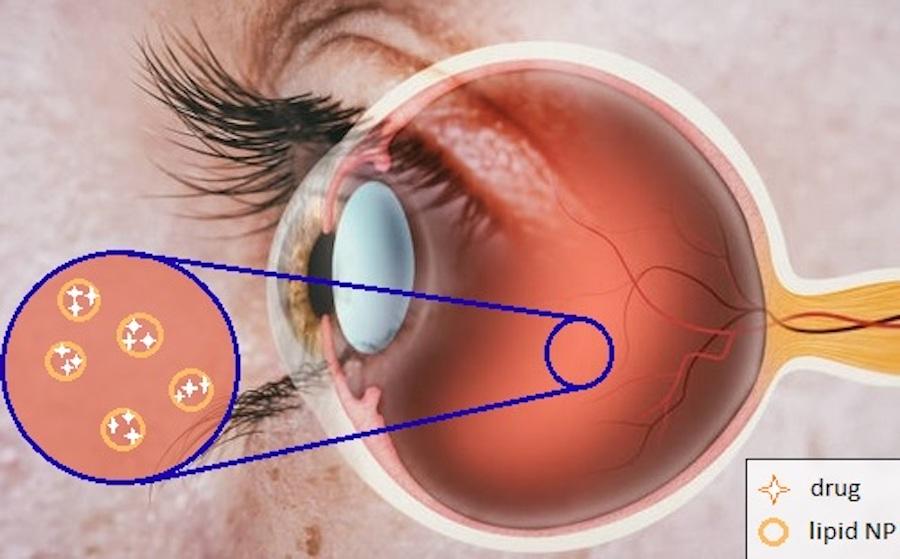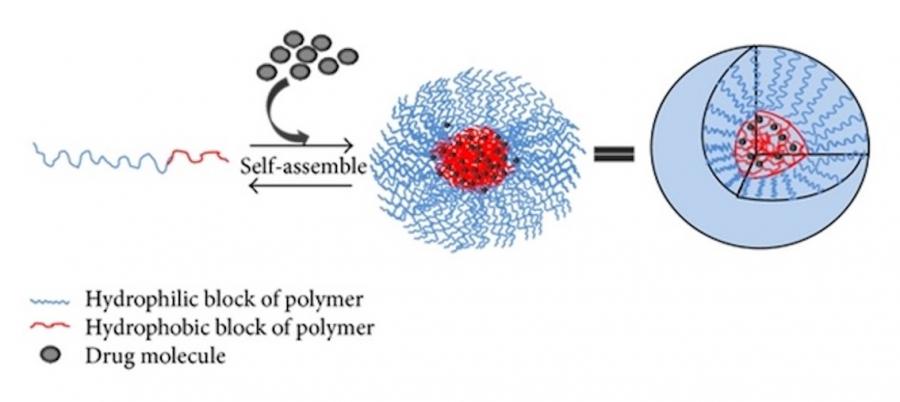Aggregation and drug-carrier interactions in nanostructured systems for topical and intravitreal administration
The search for more stable and more selective (more efficiently targeted) drug delivery systems is constant in pharmaceutical research, aiming for enhanced bioavailability of the active ingredient, less toxicity and decreased side effects of treatments. Some of these improved systems may very well be association colloids, supramolecular structures formed by the aggregation of amphiphilic molecules through physical forces of interaction. Among these aggregates, micelles and vesicles enjoy a privileged position due to their simple elaboration and a wide range of properties, depending on the structure of the surfactants they are made of, which also determine the cohesive forces that keep the aggregate together.

In this line, we currently work with gemini surfactants, a kind of surfactants with a symmetric structure that features two classic.type surfactant molecules joined together by their polar heads through a spacer group. These surfactants have certain properties which can be very interesting when engineering new colloidal carriers.
At the same time, one of the key factors for this purpose is the interaction between the carrier and its cargo. In the case of association colloids and other nanocarriers, this interactions is particularly important, since the drug and the system components may both influence release kinetics, possibly even hindering delivery altogether. Because of this, we also work with other surfactants as well as lipids, which make stable, safe delivery systems, as we study the interaction between nanocarrier components, and between those and drugs.

Currently, our work focuses on the study of three different delivery systems:
- Cell membrane-coated piezoelectric scaffolds for personalised regenerative medicine (CELLPIEZOMAT), with Prof. Carmen Álvarez Lorenzo's lab | Spanish Gov. (MICINN) project / GC 2023 call
- Interactions in specialised drug delivery systems for the treatment of inflammatory and degenerative eye diseases: nanostructured lipid carriers of antibodies for eye disease treatment, with Prof. Francisco Otero Espinar's lab | Spanish Gov. (MICINN) project / GC 2022 call
- Cationic liposomes for topic therapy against nail fungal infections (LIPOFAR project), with Profs. Xerardo Prieto & Francisco Otero's labs |Institute of Materials (iMATUS) / 2022 call
Publications on aggregates, nanocarriers and drug-carrier interactions from our lab:
- A. Kattar et al. / Heliyon 10 (2024) e25887 - go to article
- F.F.O. Sousa et al. / Eur. J. Pharm. Biopharm. 85 (2013) 790-798 - go to article
- A. Ribeiro et al. / Coll. Surf. B 103 (2013) 550-557 - go to article
Amphiphilic block copolymers as components of smart drug delivery systems

Block copolymers are polymers formed by at least two different types of monomers, separately arranged in the polymer chain according to the monomer type (e.g. AAAAABBBBB, where A and B are different monomers). Among all possible monomers, alkylene oxides [(CH2)x-O-]n, chemically formed by linear consecutive alkyl ethers, are biocompatible and show low toxicity.
Our work has focused mostly on poly(ethylene oxide) (PEO) and poly(propylene oxide) (PPO), components of polymer micelles with a small size whose aggregation is sensitive to changed in the physicochemical conditions of their environment due to the differential solubility of the different polymer blocks. This feature permits drug delivery in places with very specific conditions in the body, such as hyperthermia (either caused by disease or induced), a certain pH range, or the presence of certain small solutes used as pharmaceutical excipients.
- S.A. Pillai et al. / J. Mol. Liq. 282 (2019) 97–104 - go to article
- E.V. Lage et al. / Coll. Surf. A 537 (2018) 259–267 - go to article
- S.A. Pillai et al. / Coll. Surf. B 148 (2016) 411–421 - go to article
- P. Parekh et al. / J. Phys. Chem. B 120 (2016) 7569–7578 - go to article
- A. Bahadur et al. / Int. J. Pharm. 494 (2015) 453–462 - go to article